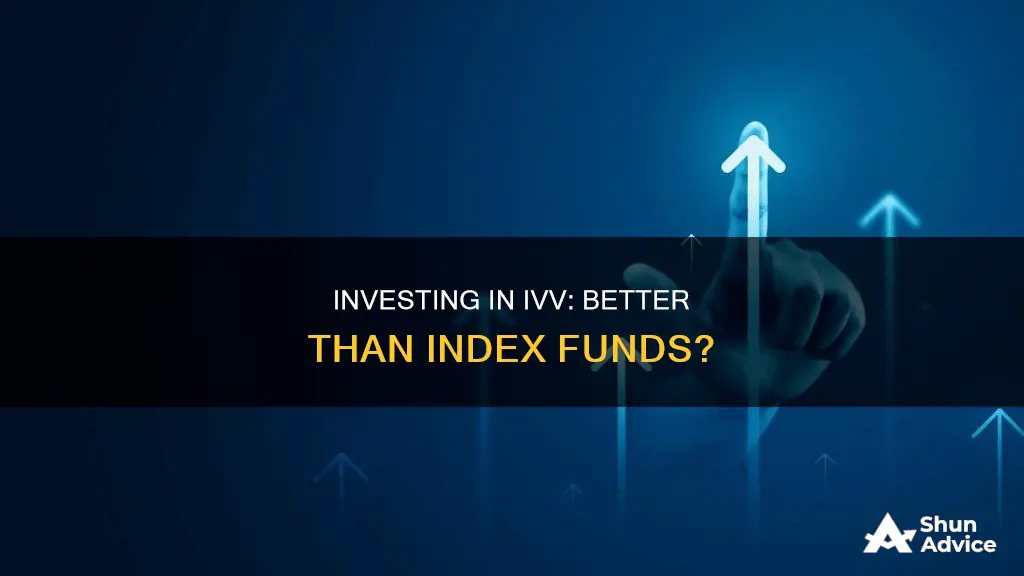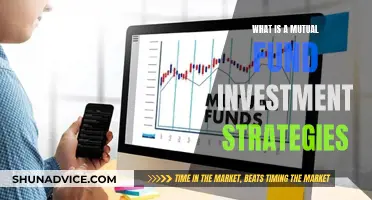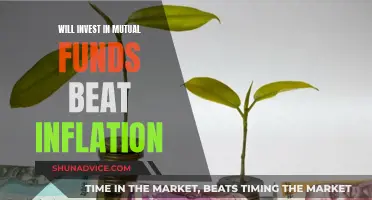
Index funds are a popular investment choice for those looking to build wealth over time. They are a group of stocks that mirror the performance of an existing stock market index, such as the S&P 500, without the need for active management. The iShares Core S&P 500 ETF (IVV) is one such fund, aiming to replicate the performance of the S&P 500, which is composed of large-capitalization U.S. equities. This fund is a good option for those seeking market-level returns and a buy-and-hold strategy, as it has a low expense ratio of 0.03% and a strong historical performance. However, it is important to consider the pros and cons of investing in index funds in general, as well as conducting thorough research before investing in any fund.
| Characteristics | Values |
|---|---|
| Investment type | Exchange-traded fund (ETF) |
| Investment objective | Track the S&P 500 index |
| Management company | BlackRock |
| Holdings | 503 stocks representing 500 companies |
| Top 10 holdings | Microsoft, Nvidia, Meta Platforms, Berkshire Hathaway Class B, Eli Lilly, Broadcom |
| Sectors | Information technology, financials, healthcare, consumer discretionary |
| Expense ratio | 0.03% |
| Tracking error | 3-5 basis points |
| Dividend yield | 1.37% |
| Average annual return | 7.5% since inception in 2000; 12.92% over the last 10 years |
What You'll Learn

IVV's advantages and disadvantages
IVV, or iShares Core S&P 500 ETF, is an exchange-traded fund (ETF) that replicates the S&P 500 index, which contains 500 of the largest and most dominant public companies in the U.S., representing all 11 economic sectors.
Advantages of IVV
- Diversification: IVV provides instant diversification, as it holds 503 stocks representing 500 companies across 11 sectors. The largest sector is information technology, at 30% of holdings, followed by financials at 13%, then healthcare and consumer discretionary, at 12% and 10% respectively.
- Low fees: IVV has an expense ratio of 0.03%, which means $3 for every $10,000 invested annually. This is the lowest expense ratio available among S&P 500 ETFs.
- Low maintenance: An S&P 500 ETF like IVV requires less oversight and maintenance than a portfolio of individual stocks.
- Good for beginners: The quality of the S&P 500 portfolio makes this ETF a good fit for novice investors. S&P 500 companies tend to be more stable and resilient than smaller businesses.
- Long-term growth: Based on historical index performance, this fund will rise and fall with market cycles in the short term but should generally trend upwards over time. The S&P 500 delivered an average annual gain of almost 8% between 1957 and 2023, including dividends and net of inflation.
- Dividends: IVV pays a dividend, currently yielding 1.37%.
- Good for buy-and-hold investors: IVV is a good investment for those seeking market-level returns from established, successful U.S. companies.
- Tax-efficiency: Like other index funds, IVV is quite tax-efficient compared to many other investments. It generally doesn't have to do as much buying and selling of its holdings, so it avoids generating capital gains that can add to investors' tax bills.
Disadvantages of IVV
- No chance of beating the market: IVV is designed to match the market's performance. If you want to outperform the market, you'll need to look at other types of investments.
- Short-term volatility: Like other index funds, IVV can be a volatile place to put your money in the short term, especially when the economy or stock market is performing poorly.
- Lots of different stocks: The diversification of an index fund can be a disadvantage if you would prefer to have more control over the specific stocks you invest in.
- Not suitable for heavy traders: IVV is not a good choice for those seeking quick profits and heavy trading.
- Potential for underperformance: While the S&P 500 has historically trended upwards, there is always the potential for it to underperform in future, which would affect IVV's performance.
- Some volatility: Volatility is an unavoidable aspect of equity investing, even with large S&P 500 companies. For example, the index dipped 22% in 2022.
A Beginner's Guide to Mutual Fund Investing
You may want to see also

Index funds vs. actively managed funds
Index funds and actively managed funds are two types of investment funds with different approaches to portfolio management and risk. Here is a detailed comparison between the two:
Index Funds
Index funds are a type of investment fund that aims to replicate the performance of a specific market index, such as the S&P 500 or Dow Jones Industrial Average. They are passively managed, meaning they are designed to track the overall success of a particular market or index without much human intervention. Index funds offer small pieces of most or all of the stocks in an index, pooled together. This makes index funds more diversified and less volatile than investing in individual stocks. The passive management style of index funds also leads to lower investment advisory fees.
Index funds are suitable for investors who want a more hands-off approach, as they require less research and active management. The funds are often diversified across various industries, countries, or investment styles, providing investors with immediate diversification. This diversification also lowers the risk compared to owning a few individual stocks. Additionally, index funds tend to have lower expense ratios, which can result in higher returns over time.
However, one of the drawbacks of index funds is that they offer lower flexibility and choice. Investors have less control over the specific stocks included in the fund and may experience steady but potentially lower gains. It's important to note that while index funds are generally less risky, they are still subject to market volatility and can lose value.
Actively Managed Funds
Actively managed funds, on the other hand, are investment funds where professional money managers actively select stocks, bonds, or other investments with the goal of outperforming the market. These funds aim to beat market returns and provide higher performance than the benchmark index. The fund managers use their expertise and research to hand-pick investments, which adds an additional layer of risk.
Actively managed funds may be preferred by investors who want more control over their investment choices and are willing to take on more risk for potentially higher returns. These funds can be useful for investors who believe they can select above-average fund managers. Additionally, actively managed funds may provide more opportunities for finding bargain-priced investments if there is less competition from other managers.
However, one of the main drawbacks of actively managed funds is the higher fees associated with active management. The expense ratios tend to be higher due to the increased level of research, analysis, and trading involved. Actively managed funds may also have higher taxable capital gains due to more frequent trading.
The choice between index funds and actively managed funds depends on an investor's risk tolerance, investment goals, and level of involvement. Index funds offer a more passive approach with lower fees and good long-term outlooks, while actively managed funds provide the potential for higher returns but come with higher costs and more volatility.
Tata AIA Flexi Growth Fund: Investing Strategies for Beginners
You may want to see also

How to invest in IVV
Step 1: Understand IVV
IVV, or iShares Core S&P 500 ETF, is an exchange-traded fund (ETF) that aims to track the performance of the S&P 500 Index, which is composed of large-capitalization US equities. The fund seeks to invest at least 80% of its assets in the component securities of this index. By investing in IVV, you gain exposure to the largest US stocks through a single fund, which is also low-fee.
Step 2: Research and Analyse IVV
Before investing, carefully examine the fund's history, including its performance, holdings diversity, and tracking error, to ensure it aligns with your financial goals.
Step 3: Choose a Brokerage Platform
To invest in IVV, you will need to sign up for an ETF broker platform with access to the Australian Securities Exchange (ASX), as IVV is listed on this exchange. Compare different platforms and choose one that suits your needs, considering factors such as fees, features, and available funds.
Step 4: Open and Fund Your Brokerage Account
Complete an application with your personal and financial details, such as your ID and tax file number. Then, fund your account using a bank transfer, PayPal, or debit card.
Step 5: Purchase IVV Shares
Search for IVV by its name or ticker symbol and decide on the number of shares you want to buy, considering your budget and diversification goals. You can buy the shares at the current market price or use a limit order to delay your purchase until the fund reaches your desired price.
Step 6: Monitor Your Investment
Stay on top of your investment by tracking the performance of IVV over time. Remember that you may be eligible for dividends and shareholder voting rights that can impact your stock.
Additional Considerations:
- Costs and Fees: Consider the costs and fees associated with investing in IVV, including brokerage fees, management fees (expense ratio), and any other applicable charges.
- Risk and Diversification: IVV provides diversification across large-cap US equities, but it's important to assess how it fits within your broader investment portfolio and risk tolerance.
- Investment Horizon: As with any investment, consider your investment horizon and whether you are prepared to hold IVV for the long term.
Remember, it is always recommended to consult with a qualified financial advisor before making any investment decisions to ensure they align with your specific circumstances and goals.
Index Funds: Safe Investment or Risky Business?
You may want to see also

IVV's historical performance
The iShares Core S&P 500 ETF (IVV) is a fund sponsored by BlackRock, one of the largest fund companies. This fund is one of the largest ETFs and it tracks the S&P 500. With an inception date of 2000, this fund is a long-tenured player that has tracked the index closely over time.
As of September 2024, the fund has had a compound annual return of 8.43% over the past 24 years, with a 15.17% standard deviation. It suffered a maximum drawdown of -50.78% that took 53 months to recover. The fund's 5-year annualized return is 16.0%.
The fund's performance overview as of August 2024 is as follows:
- 7.81% YTD Daily Total Return
- 27.11% 1-Year Daily Total Return
- 9.13% 3-Year Daily Total Return
As of October 2024, the fund's performance overview is:
- 18.92% YTD daily total return
- 27.95% 1-year daily total return
- 9.91% 3-year daily total return
Social Security Funds: Risky Business or Smart Investing?
You may want to see also

IVV's top holdings
IVV, or iShares Core S&P 500 ETF, is an exchange-traded fund (ETF) that tracks the S&P 500 index, which is composed of large-capitalization US equities. As of October 2024, its top holdings include:
- Microsoft Corporation (MSFT)
- Amazon.com Inc. (AMZN)
- Meta Platforms Inc - Ordinary Shares - Class A (META)
- Alphabet Inc - Ordinary Shares - Class A (GOOGL)
- Alphabet Inc - Ordinary Shares - Class C (GOOG)
- Berkshire Hathaway Inc Class B (BRK.B)
These top holdings represent some of the largest and most well-known companies in the US stock market, spanning the technology, e-commerce, and financial services sectors. As of August 2024, the median market cap was not available, but the average weighted market cap was $461.03 billion, indicating that IVV's holdings are predominantly large-cap stocks.
A Guide to Money Market Funds: Investing Basics
You may want to see also
Frequently asked questions
An index fund is an investment fund that tracks the performance of a market index, such as the S&P 500. Index funds can be in the form of mutual funds or exchange-traded funds (ETFs).
You can invest in an index fund by opening and funding a brokerage account. You can buy shares of ETFs on the open market, and most brokers allow you to invest directly in mutual funds.
Since its inception in 2000, the average annual return of IVV has been 7.5%. In the last 10 years, the average annual return has been 12.92%.
The expense ratio of IVV is 0.03%, which means you pay $3 for every $10,000 invested annually.
Index funds offer minimal investment research, managed investment risk through diversification, a wide range of choices, low fees, and tax efficiency. They are a simple and effective way for investors to build wealth over time.







